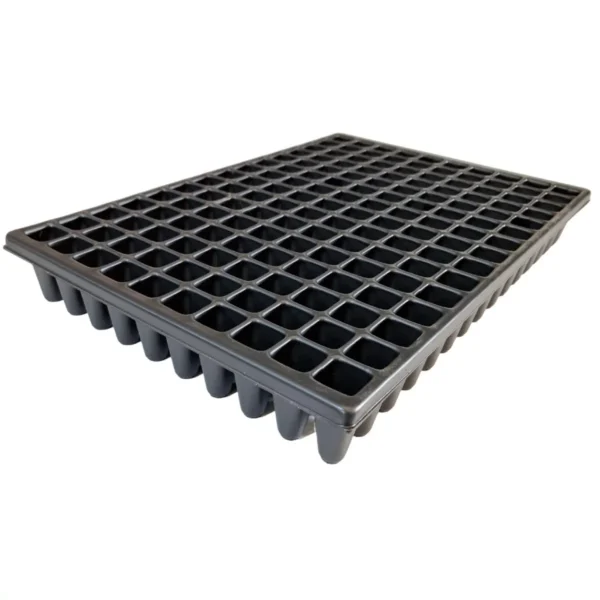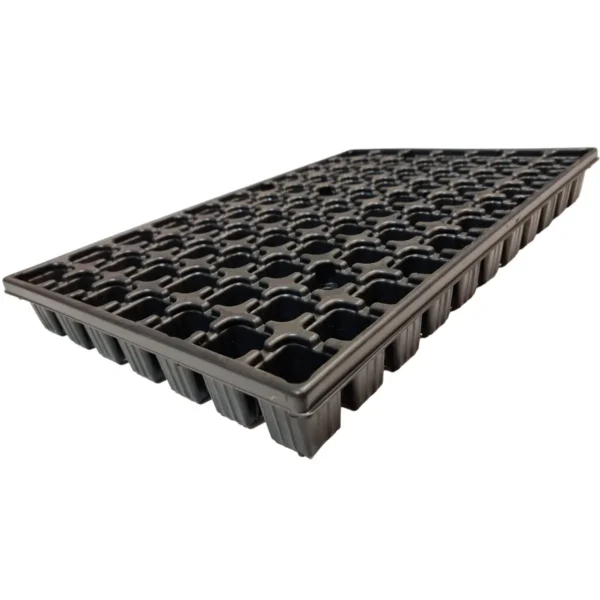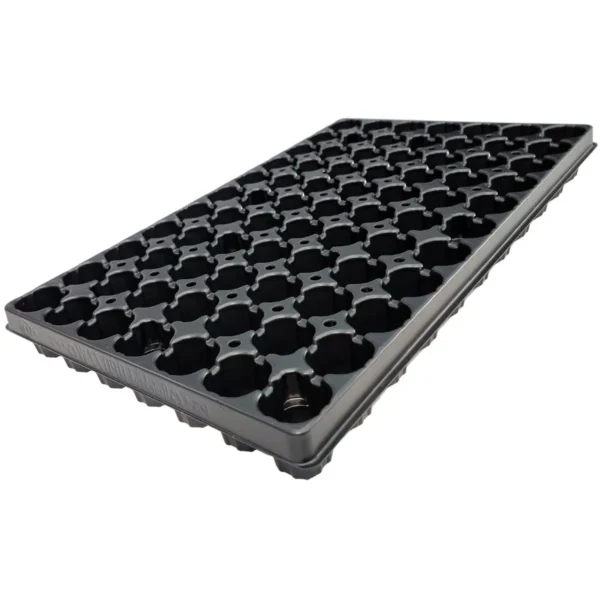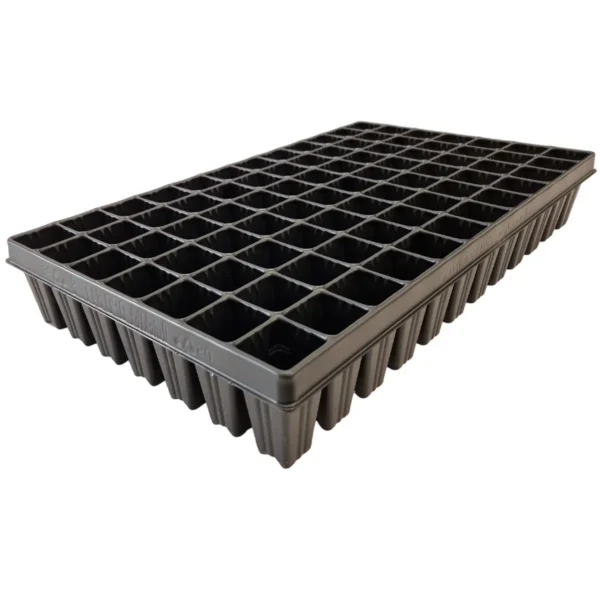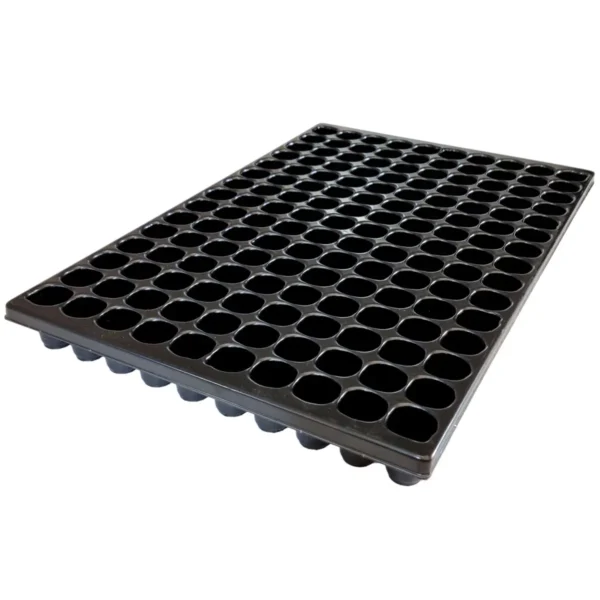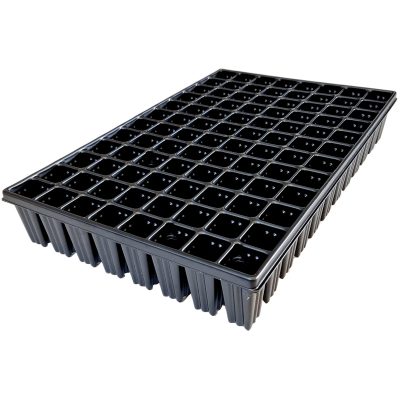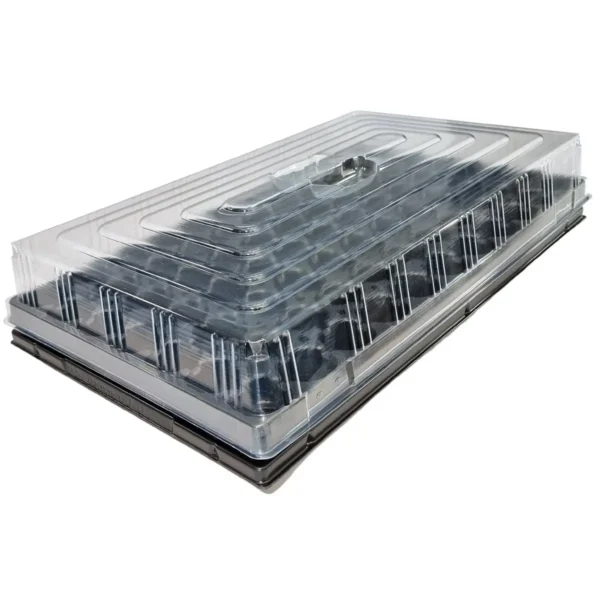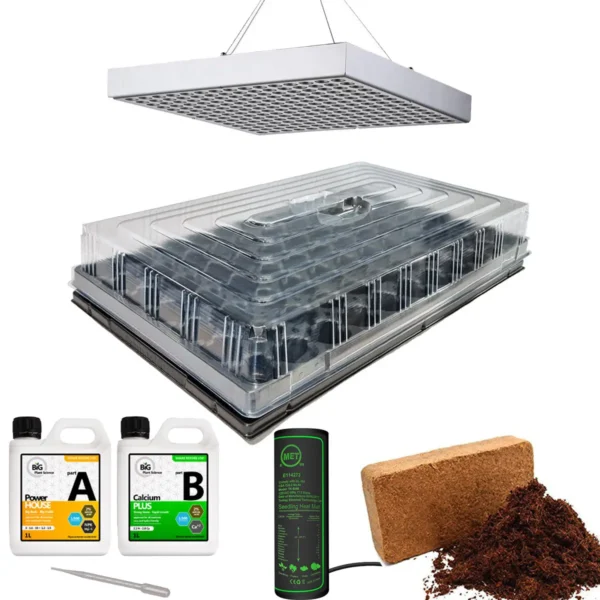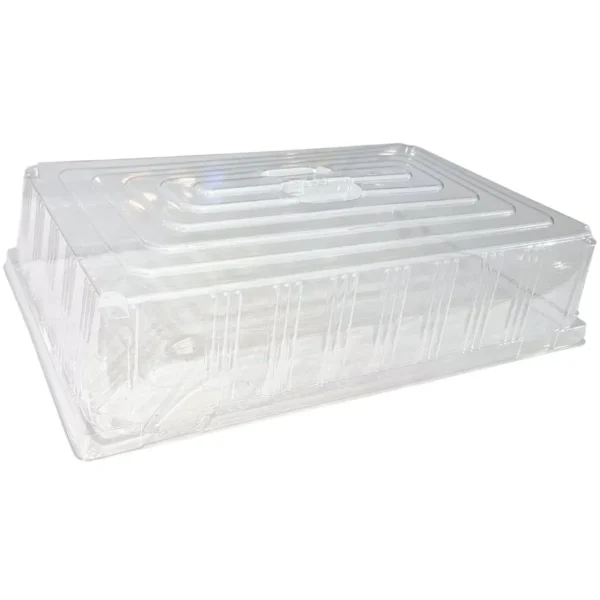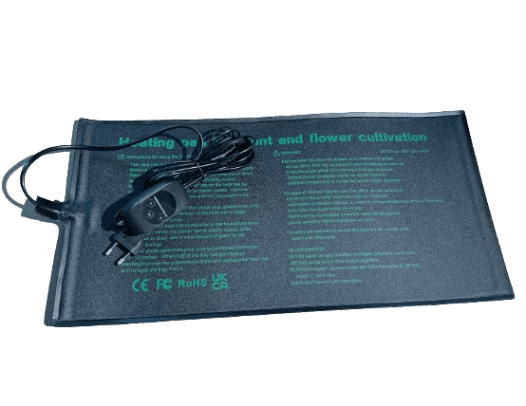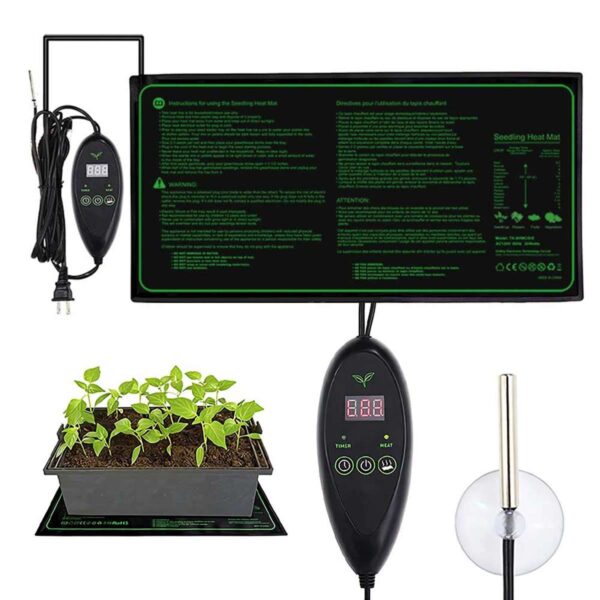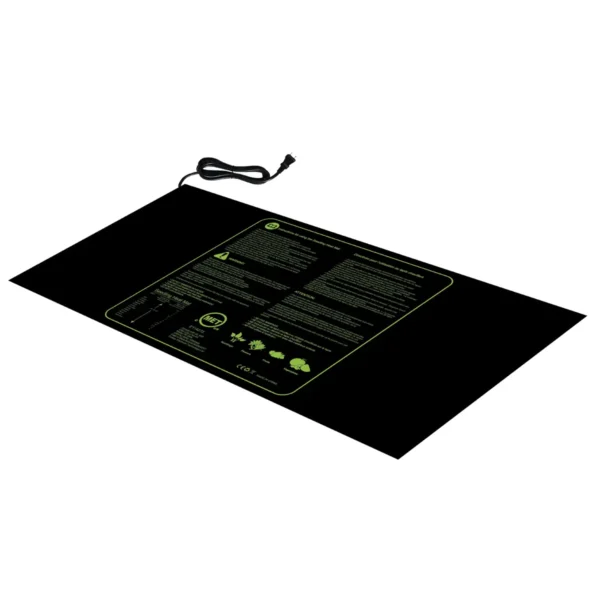Table of contents
ToggleWhat is a seed tray?
One sprout hill is a type of tray. Specifically designed to pre-germinate seeds, it is a type of pre-germination setup. It's a tray with several compartments or segments where you can place the seeds and then cover them with a piece of clear plastic or lid to keep the soil or cold moist and protect the seeds from wind and sunlight.
The seed tray can be made of different materials, such as plastic, metal or wood, and can have multiple compartments or segments so that different types of seeds can be grown simultaneously. They can also have holes in the bottom for drainage and can have lids or covers to keep the soil moist and protect the seeds from wind and sunlight.
The seed tray is an easy and practical way to pre-sprout seeds, as it allows you to better monitor the seeds and make sure they get the right amount of moisture and heat. It can also be a good way to grow the seeds in a controlled environment and make sure the seeds germinate at the right time.
How to pre-sprout your plants in seed trays
The right conditions are important if you want to successfully pre-germinate plants in seed and prickly pear trays. At home, with a little knowledge, you can sow a variety of seeds and get the healthiest cuttings that can develop into healthy and vigorous plants.
Whether you need to fill an entire vegetable garden, a small balcony or just a windowsill. An extra heavy-duty seed tray divided into cells is a great help.
Below we have created a guide on how to get started with pre-germination, whether it's in seed trays, seed pots or other types of pre-germination boxes and mini greenhouses.
-
Seed tray 150 compartments – QuickPot 150 T – STD
- DKK 66,00
- Add to basket
Item no.: 28036 -
- Sale!
77 compartment seed tray in strong plastic - QuickPot 77W
-
DKK 69,00Original price was: DKK 69,00.DKK 65,00Current price is: DKK 65,00. - Add to basket
Item no.: 28033 -
- Sale!
QuickPot 77 Standard seed tray – STD
-
DKK 69,00Original price was: DKK 69,00.DKK 59,00Current price is: DKK 59,00. - Add to basket
Item no.: 28032 -
- Sale!
QuickPot D 77W seed tray
-
DKK 62,00Original price was: DKK 62,00.DKK 59,95Current price is: DKK 59,95. - Add to basket
Item no.: 28049 -
- Sale!
Seed tray 84 Room – QuickPot D 84 T/8
-
DKK 69,00Original price was: DKK 69,00.DKK 62,00Current price is: DKK 62,00. - Add to basket
Item no.: 28050 -
- Sale!
QuickPot 150 R Sowing Tray – STD
-
DKK 69,00Original price was: DKK 69,00.DKK 65,00Current price is: DKK 65,00. - Add to basket
Item no.: 28035
Which soil should you choose for seed tray pre-germination?
For pre-germination in seed trays, it's recommended to use a specialised mixture of coco topsoil and soil that is tailored to be fine and light. This type is ideal as it facilitates seed germination and supports healthy growth of the tiny roots.
Choosing a low-nutrient mix encourages the roots to stretch for nutrients, which helps develop a strong root system.
Such a specialised mix is also often treated to be free of bacteria and fungi, which reduces the risk of disease in the young plants.
This soil type is also beneficial because it retains moisture efficiently while ensuring good drainage, which is essential for preventing root rot and other water-related problems.
It's also an option to create your own soil mix for pre-germination by carefully selecting ingredients such as coconut fibre and fine compost or vermicompost, which ensures both good drainage and a proper nutrient balance.
When making your own mix, it's important to make sure it's cleaned of bacteria and fungi to protect young plants from disease.
The choice of soil should ensure that it is light and airy, which is essential to promote effective germination and healthy root development.
-
Coconut mould - Plagron Cocos Brix 6x9L - Coco Coir
- DKK 149,95
- Add to basket
Item no.: 28093 -
Coconut mould - Plagron Cocos Brix - Coconut soil
- DKK 28,00
- Add to basket
- Rated 5.00 out of 5
Item no.: 28059
Use an underwater tray
An underwatering tray is a method of watering plants from below. Instead of watering the soil from above, the tray under the seed tray is filled with water, allowing the plants to absorb moisture from below. This has several advantages:
- Less risk of overwatering: When plants are watered from below, they only take up the amount of water they need, minimising the risk of overwatering and the problems that come with it, such as root rot.
- Promotes strong root networks: This method encourages plants to develop deeper and stronger roots as they extend downwards to reach the water. This results in healthier and more robust plants.
- Reduces evaporation and waste: By irrigating from below, water evaporation is reduced compared to surface irrigation.
This makes watering more efficient and water-saving.
-
Underwatering trays for Danish seed trays
- DKK 49,95
- Add to basket
Item no.: 28048 -
Underwater tray for QuickPot seed trays STD
- DKK 59,95
- Add to basket
Item no.: 28047 -
QuickPot D QP 77 Plant sprouting tray with sub-watering tray
- DKK 149,95
- Add to basket
Item no.: 28029
Get started using your pre-germination tray
When you start using your seed tray, you'll need just a few things - the seed tray, seed and prickly soil, and the seeds you want to sow - now you're ready to sprout.
First you choose which one germination tray, that suits your needs best, can be pre-sprouted in a multitude of different plastic trays, large or small and divided into cells or sown in rows in larger seed boxesIt's important to choose a seed or dot tray with holes in the bottom so that the soil can drain away excess water should you overwater.
You can also use an atomiser to avoid overwatering your plants.
We recommend seed and prickly soil or coconut fiber for your seedlings, as the amount of fertiliser is adapted to the small, new and delicate roots. A regular potting soil will generally contain too much fertiliser for your cuttings.
When the seed tray has been chosen, soil and seeds have been purchased, you are ready.
Sowing and caring for your plant in a mini-greenhouse
Spread the soil in the seed tray and moisten lightly. Then sow the seed at the recommended depth, which can be read on the back of most seed bags.
Here you can also see when in the year your seeds should be pre-germinated. Some seeds germinate quickly and can be seen after just a few days, while others, such as chilli, can take up to a month to get started.
Some seeds can germinate at low temperatures, while others need a little more heat - it's always a good idea to read the bag of each variety if you're unsure of how they thrive.
To increase the temperature and speed up the process, it's a good idea to have a clear plastic lid on.
It can be a bag or a small mini greenhouse that fits your seed tray.
Once or twice a day, lift the lid and air out your mini greenhouse. You don't want too much condensation, otherwise you risk the soil in your seed tray getting too wet and, in the worst case, rotting.
Once your seeds have germinated, it's important that you remove the plastic lid from the seed tray, otherwise you risk burning the tiny, delicate roots.
The first set of leaves to emerge are called cotyledons, and once your plant has a second set of leaves. Minimum 4 in total, you can move on to the next step, which is repotting, if you use a seed tray with cells you can easily pick up your small, delicate pre-sprouted plants and transfer them to a slightly larger seed pot, leaving the soil at the roots behind. The roots of your new plants are fragile and will be damaged if you try to remove it.
If you pre-sprout in a large container, gently separate the plants and move them to a pot where they can grow bigger.
It's a good idea to repot your plants several times. Always to a pot that is slightly larger than the previous one, so you will achieve a larger root system, which leads to better-looking and larger plants.
-
Mini greenhouse QuickPot QP77 D with sub-watering tray, lid
- DKK 199,00
- Add to basket
Item no.: 28130 -
Intermediate starter package for pre-sprouting plants
- DKK 1.047,00
- Add to basket
Item no.: 28058 -
Mini greenhouse for QuickPot Danish seed trays 8cm lid
- DKK 37,95
- Add to basket
Item no.: 28042 -
QuickPot Mini greenhouse lid 12 cm for Danish trays
- DKK 49,95
- Add to basket
Item no.: 28043
Use heating mats
Seed tray heat mats are an essential tool for gardeners and growers who want to speed up seed germination by providing a constant and controlled heat source to the plant's root zone.
They are particularly useful in colder climates or during seasons where sunlight and ambient temperatures are not sufficient to support rapid germination.
A seed tray heating mat is designed to lay under or around your seed trays, radiating a gentle heat that can raise the soil temperature to an optimal level for germination. Many heat mats come with thermostats or have pre-set temperatures, making it easy to maintain the ideal temperature for the specific seeds you're trying to germinate.
When choosing a heating mat, it's important to consider the size of your seed trays to ensure that the heating mat covers the required area.
It's a good idea to look for models that are water resistant and easy to clean, as this will extend the lifespan of the heat mat and ensure safe operation.
In addition, it can be useful to invest in a heating mat with a built-in thermostat or purchase an external thermostat so you can precisely control the temperature.
This is especially important for seeds that require very specific germination temperatures.
-
Heating mat for sprouts and cuttings 25x50cm 18Watt with thermostat
- DKK 247,00
- Add to basket
Item no.: 28170 -
Heating mat for sprouts and cuttings 50x50cm 45Watt
- DKK 248,00
- Add to basket
Item no.: 28129 -
- Out of Stock
Heating mat for plants 25x50cm with digital thermostat
- DKK 339,00
- Read more
Item no.: 28128 -
-
Heating mat for sprouts and cuttings 25x50cm fits most plant trays
- DKK 297,00
- Add to basket
Item no.: 28006 -
- Out of Stock
Large greenhouse heating mat 50x120cm - 100Watt
- DKK 569,00
- Read more
Item no.: 28010 -
Planting
Whether the plants are in a pot on the patio. In the ground, outdoors or in the greenhouse.
If you need an acclimatisation period, this is done by setting the plants out for a few hours every day.
Preferably somewhere sheltered from too much wind and not in direct sunlight.
In the greenhouse, the strong sun can destroy the delicate leaves. Even if you're sure it's frost-free, it's still crucial that plants gently acclimatise to their new location, even in the greenhouse.

Root rot is a condition where plant roots rot due to overwatering/excess water leading to plant death. In order for excess water to drain away, make sure that pots and plant beds have good drainage.
Some of the symptoms of root rot are that the plant has withered or yellow leaves, roots become slimy and lose firmness, there is a bad odour coming from the plant and it doesn't seem to grow anymore


